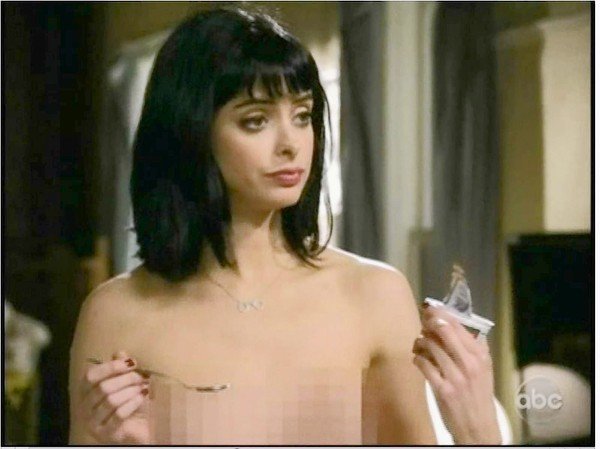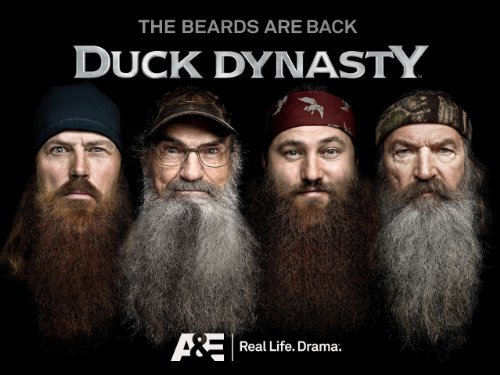 Regulating indecency on broadcast TV is a tricky business. First of all, the American public does not agree on what is or isn’t indecent. Differences of geography, background, religiosity, and age account for much of the variance…but even then it is difficult to find commonality on what is or isn’t appropriate for prime time TV when children may be in the audience. Another complicating factor is that the networks are competing with basic and premium cable/satellite TV programming which is not subject to the same regulatory scrutiny as over-the-air TV networks. To further confuse the issue, the increase in IPTV and smart TVs that stream video content over the internet makes the distinction of broadcast TV’s more restrictive content policies appear less and less relevant.
Regulating indecency on broadcast TV is a tricky business. First of all, the American public does not agree on what is or isn’t indecent. Differences of geography, background, religiosity, and age account for much of the variance…but even then it is difficult to find commonality on what is or isn’t appropriate for prime time TV when children may be in the audience. Another complicating factor is that the networks are competing with basic and premium cable/satellite TV programming which is not subject to the same regulatory scrutiny as over-the-air TV networks. To further confuse the issue, the increase in IPTV and smart TVs that stream video content over the internet makes the distinction of broadcast TV’s more restrictive content policies appear less and less relevant.
Despite–or perhaps because of–the confusion, the controversy is not going away. A study by the media watchdog group Parents Television Council revealed a significant increase in the number of instances of pixelated “full-frontal nudity” on network TV. According the PTC, there was one instance in the 2010-2011 season and 64 in the most recent season. Use of pixelation allows the networks to avoid prosecution by the FCC while implying nudity for comedic or dramatic effect.
According to a quote in the LA Times, PTC President Tim Winter said,
pixilated flesh is “unfortunate, unnecessary and offensive to the family audience” and that it happened more often in 7 to 9 p.m. shows, when kids could be watching, than in those airing after 10 p.m. Nor did the shows’ ratings always warn parents of sensitive content.
Because of the sensitive nature of these issues and the difficulty of making the right decision during the initial filming or taping, occasionally special effects are used in post production to modify the frames that might cross the line. According the same article in the LA Times,
John Gross, a veteran visual effects supervisor at L.A.-based Eden FX, said he and other effects executives are often asked to add pixels or shadow parts of actors’ bodies so network shows will pass muster with censors. They also draw clothes back on so that programs can be sold to international markets more modest than the U.S.
The FCC’s polities on indecent language are also under scrutiny. Currently the courts are wrestling with the proper interpretation of regulatory policies that prohibit “language or material that, in context, depicts or describes, in terms patently offensive as measured by contemporary community standards for the broadcast medium, sexual or excretory organs or activities.” Radio stations carrying the Howard Stern Show racked up about $2.5 million in FCC fines before Stern moved from broadcast radio to Sirius XM satellite radio, which is exempt from FCC indecency policies. After several awards show incidents, it is now common policy on live radio and TV to have a short delay which allows a censor to hit a switch to mute the sound or picture in the event of an unscripted moment of vulgarity or profanity.
This practice has become so commonplace that Jimmy Kimmel has a reoccurring segment called “This Week in Unnecessary Censorship” in which he “bleeps and blurs” video clips to give the appearance of vulgarity and indecency when in fact nothing of the sort had taken place. But viewers are easily persuaded to fill in the gaps by imagining the worst. The same phenomenon is happening with the pixelation of full-frontal nudity. Even though the actors are wearing flesh-colored undergarments, the pixelated image encourages the viewer to assume or imagine that the actor is indeed nude in the scene.
So here’s the question: where does offense over indecency happen? Is it in the word or image presented, in the mind of the audience member, or, somewhere in between?
 In case you haven’t heard, the current TV ratings powerhouse is a reality TV show on A&E about a family from Louisiana that made $millions making duck calls. Duck Dynasty is cleaning up in the ratings and has surpassed the long-time ratings champ American Idol (which had fallen on hard times of late).
In case you haven’t heard, the current TV ratings powerhouse is a reality TV show on A&E about a family from Louisiana that made $millions making duck calls. Duck Dynasty is cleaning up in the ratings and has surpassed the long-time ratings champ American Idol (which had fallen on hard times of late).


 The latest in the Dark Knight series is struggling to bounce back from the tragic shooting in Aurora that appears to be having a greater impact on attendance than initially projected. It may appear callous to be talking about box office receipts and financial success when so many lives were lost and others were changed forever. But that is the nature of the business of big media. The studio, Warner Brothers, took steps to try to appear sensitive to the tragic shooting. They delayed reports of box office receipts that first weekend and cancelled premiere events in Paris, Mexico City and Tokyo. According to the WSJ, a spokesperson for the studio said, “We just felt it would be disrespectful and not the right thing to do to go forward.” Warner Bros also pulled trailers for Gangster Squad from theaters because of a scene that includes shooting up a movie theater. Meanwhile, security has been beefed-up and theater chains are implementing new rules about patrons showing up in outfits and masks.
The latest in the Dark Knight series is struggling to bounce back from the tragic shooting in Aurora that appears to be having a greater impact on attendance than initially projected. It may appear callous to be talking about box office receipts and financial success when so many lives were lost and others were changed forever. But that is the nature of the business of big media. The studio, Warner Brothers, took steps to try to appear sensitive to the tragic shooting. They delayed reports of box office receipts that first weekend and cancelled premiere events in Paris, Mexico City and Tokyo. According to the WSJ, a spokesperson for the studio said, “We just felt it would be disrespectful and not the right thing to do to go forward.” Warner Bros also pulled trailers for Gangster Squad from theaters because of a scene that includes shooting up a movie theater. Meanwhile, security has been beefed-up and theater chains are implementing new rules about patrons showing up in outfits and masks.

